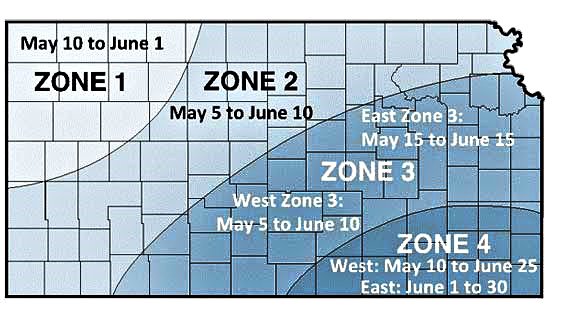If you are a soybean grower, I’m sure you are aware of the interest in planting soybeans earlier in the Midwest, and I know that growers in Kansas are starting to try this as well.
After considering the effects of genetic yield potential and the environment, planting date is one of the primary management practices under the farmer’s control that can highly influence soybean yields. In recent years, Kansas producers have been planting soybeans slightly earlier -- at the rate of about one third-of-day per year. The past growing seasons, however, the “50% planting date” mark was achieved at a similar time (first week of June) statewide.




Recommendations
• Ultimately, weather patterns dictate soybean yields, especially under dryland conditions. There is no guarantee that any certain planting date will always work out the best when it comes to soybean yields in Kansas. In fact, the distribution and amount of rainfall and the day/night temperature variations around flowering and during the grain filling periods have large impacts on defining soybean yield potential. Thus, when the risk of drought stress during the growing season is high, diversifying planting dates may be a good approach to consider.
• When planting early, seed should be treated with a fungicide and insecticide. Selecting varieties with resistance to soybean cyst nematode and sudden death syndrome is advisable. Do not plant into soils that are too wet. Also, do not plant until soil temperatures are close to 60 degrees F. If planted into soils cooler than 60 degrees F, seedlings may eventually emerge but will have poor vigor.
• In drier areas of Kansas and on shallow soils, yields have been most consistent when planting soybeans in late May to early June. By planting during that window, soybeans will bloom and fill seed in August and early September, when nights are cooler and the worst of heat and drought stress is usually over.
Information provided by Ignacio Ciampitti, Crop Production and Cropping Systems Specialist.
Stacy Campbell is an agriculture and natural resources agent for Cotton Extension District. Email him at scampbel@ksu.edu or call the Cotton Extension District Hays office, 785-628-9430.





